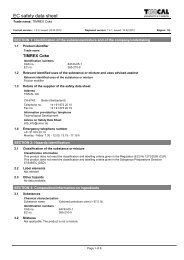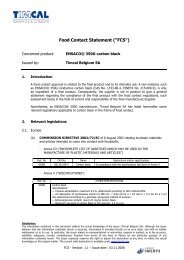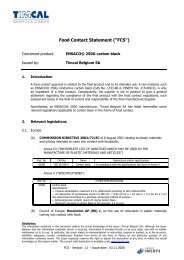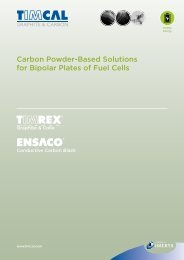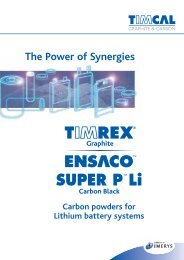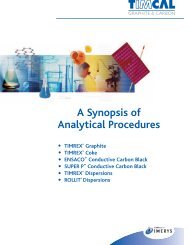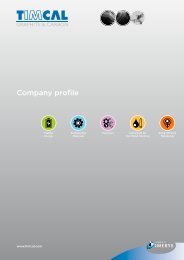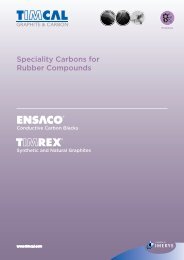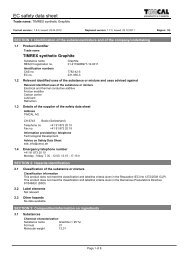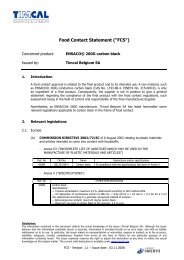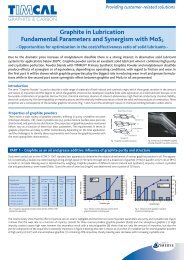Carbon Black Users Guide - Timcal
Carbon Black Users Guide - Timcal
Carbon Black Users Guide - Timcal
You also want an ePaper? Increase the reach of your titles
YUMPU automatically turns print PDFs into web optimized ePapers that Google loves.
APPENDIX AMortality and Morbidity Studies Overviewthat had been diagnosed, but which had not led to death (Ingalls, 1950; Ingalls andRisquez-Iribarren, 1961; Robertson and Ingalls, 1989). The incidence of cancer amongcarbon black workers was compared both to unexposed carbon black workers and tocancer rates compiled in various states. No increase in cancer morbidity was noted inthese investigations.A nested case control study was also performed on this same cohort (Robertson and Ingalls,1989). A case was defined as a member of the study population who filed a health insuranceclaim with a diagnosis of either a malignancy or a disorder of the circulatory or respiratorysystem. Two controls were matched to each worker and cumulative exposure to carbonblack was estimated by relating measured concentrations of carbon black to specific jobcategories. No statistically significant increase in the risk of any malignancy was noted.SUMMARY OF HUMAN STUDIESMortality studies have evaluated the risk of death from illness, including cancer, nonmalignantrespiratory disease, and cardiovascular disease. These studies did not link anyincreases in either overall mortality or lung cancer deaths to carbon black exposure.Morbidity issues associated with occupational exposure have pertained to whether carbonblack causes increases in risk of respiratory symptoms, decrements in lung function, orabnormalities on a chest film. Long-term exposure to carbon black in the manufacturingindustry may lead to minor decrements in FEV 1 (27 - 48ml of additional loss over a 40-yearworking lifetime) and small changes in radiographs. Chest film opacities observed in carbonblack workers tend to resemble opacities found in populations unexposed to dust, althoughslight increases have been noted in some carbon black workers. The studies do not delineatewhether such effects are specific to carbon black or reflect effects that may be seen withother relatively inert, poorly soluble, inorganic dusts.Acute exposure to carbon black does not pose any significant risk to health, beyond whatmight be expected from exposure to any poorly soluble dust. In occupational settings, airbornecarbon black consists of large-sized agglomerates that can deposit in the upper respiratorytract. As a result, cough and irritation to the eyes may occur at high levels in some settings.Such effects are expected to be transitory and not to result in any long-term effect on lungfunction. Consisting almost entirely of carbon, carbon black is not metabolized. Onceinhaled, the carbon black is removed via the mucociliary transport system of the lungs.A-5



